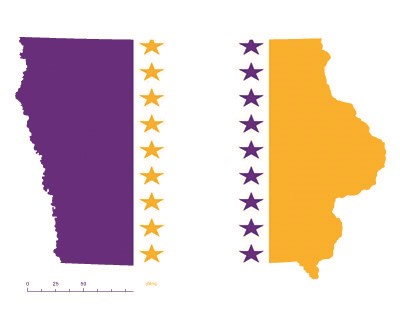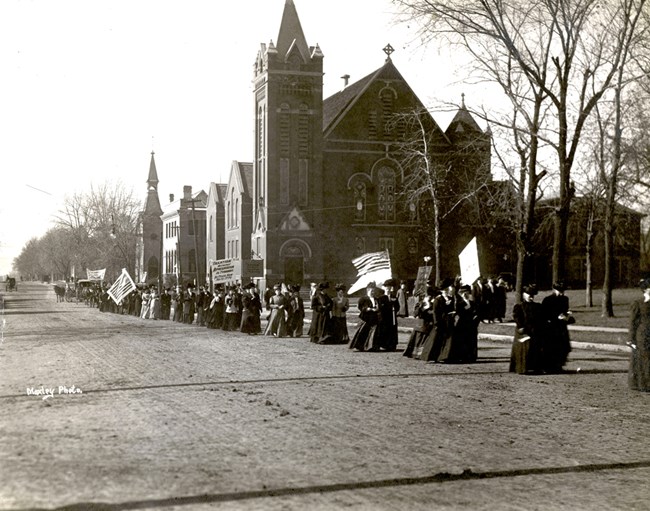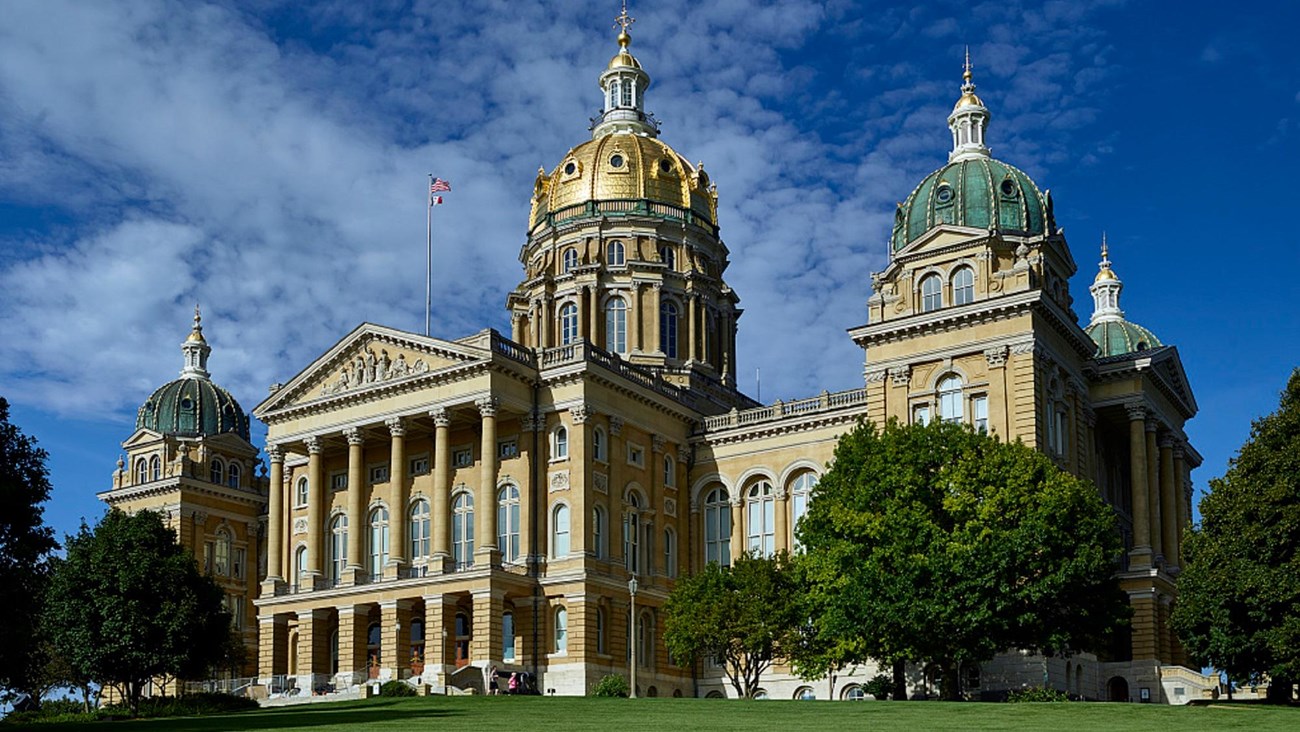Last updated: August 15, 2019
Article
Iowa and the 19th Amendment

Women first organized and collectively fought for suffrage at the national level in July of 1848. Suffragists such as Elizabeth Cady Stanton and Lucretia Mott convened a meeting of over 300 people in Seneca Falls, New York. In the following decades, women marched, protested, lobbied, and even went to jail. By the 1870s, women pressured Congress to vote on an amendment that would recognize their suffrage rights. This amendment was sometimes known as the Susan B. Anthony Amendment and became the 19th Amendment.
The amendment reads:
"The right of citizens of the United States to vote shall not be denied or abridged by the United States or by any state on account of sex."
Although progress on the federal amendment stalled, women also campaigned for changes to state suffrage requirements to win the vote.Iowa was home to many important suffrage leaders. Amelia Bloomer moved to Council Bluffs in 1854. Bloomer had to sell her popular women’s rights newspaper, The Lily, after she relocated to the frontier state because there were no publishing facilities in her town. She remained a contributor to the paper until it shut down in 1856. She was the president of the Iowa Suffrage Association from 1871-1873. Bloomer remained involved in women’s rights and temperance activism throughout her life. Carrie Chapman Catt, who served two terms as the president of the National American Woman Suffrage Association, grew up in Iowa and received her Bachelor of Science degree from Iowa State College. She was the only woman to graduate with her class in 1880. Catt worked in education in Iowa and was superintendent of schools for Mason City. It was during her term as president of the Iowa Woman Suffrage Association that she met Susan B. Anthony and became involved in the national suffrage movement, speaking before Congress in 1892 in support of an amendment to the US Constitution enfranchising women.

State Historical Society of Iowa
The state suffrage effort saw small victories and many defeats. Iowa women won limited suffrage in 1894. They were able to vote on ballot questions regarding bond or tax issues but not for candidates. To amend the state constitution removing the word “male” from the section that defined eligible voters required passing the resolution through two successive sessions of the state legislature. Since the legislature only met every two years, this was a long process. Several times beginning in 1870, woman suffrage proposals failed during this process. Finally in 1916, a resolution passed through the legislature and was put on the ballot for approval by the voters. Although victory seemed at hand, woman suffrage was voted down. Iowa women could not vote on the suffrage issue in that election.
After decades of arguments for and against women's suffrage, Congress finally passed the 19th Amendment in 1919. After Congress approved it, at least 36 states needed to vote in favor of the amendment for it to become part of the U.S. Constitution. This process is called ratification.
On July 2, 1919, the Iowa legislature voted to ratify the Nineteenth Amendment. By August of 1920, 36 states (including Iowa) ratified the amendment, which ensured that the right to vote could not be denied or abridged based on sex.

Iowa Places of Women's Suffrage:
State Capitol Building
In 1916, Iowa suffragists convinced politicians to hold a state constitutional convention at the State Capitol Building. Politicians voted to change the state constitution to include women as eligible voters. When the amendment was put to the Iowa voters, the referendum failed. Three years later, the state legislature voted to ratify the 19th Amendment on July 2, 1919. The State Capitol Building now includes a bronze bas-relief memorial to the pioneer suffragists created by Iowan sculptor Nellie Walker. The State Capitol Building is listed on the National Register of Historic Places and is open for public tours.

Iowa Suffrage Memorial Commission records, Iowa Women's Archives, University of Iowa Libraries

The Iowa State Capitol Building is an important place in the story of ratification. It is listed on the National Register of Historic Places
